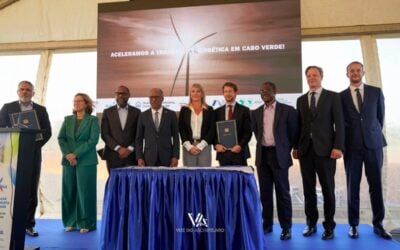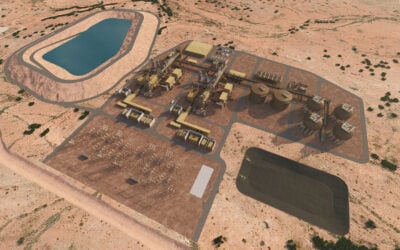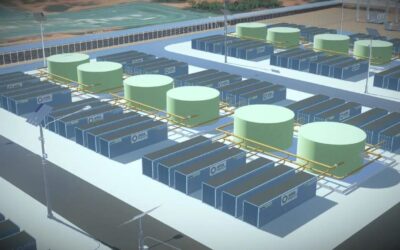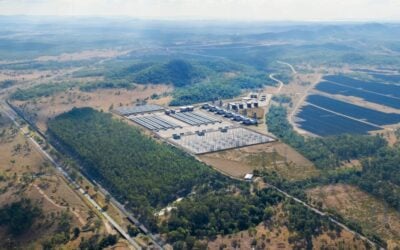
Texas’ ERCOT grid is facing some extreme swings in its ability to match supply with growing demand for electricity in the US state, presenting an economic opportunity for energy storage.
ERCOT is responsible for the grid and wholesale power markets in most of Texas. Due largely to a fully competitive market structure, it has also become a hotbed for solar PV, wind and now energy storage deployment.
In a webinar hosted last week by energy software and consulting group Ascend Analytics, the company’s director of market intelligence said that this growth, coupled with an ageing thermal power plant fleet and coal plants becoming uneconomical, present a need for flexibility.
That flexibility can be largely provided by energy storage systems with relatively short durations, Brent Nelson said, particularly as ERCOT’s renewable energy buildout is forecast to continue, with solar PV in particular set to add a “massive amount in a very short period of time”.
Try Premium for just $1
- Full premium access for the first month at only $1
- Converts to an annual rate after 30 days unless cancelled
- Cancel anytime during the trial period
Premium Benefits
- Expert industry analysis and interviews
- Digital access to PV Tech Power journal
- Exclusive event discounts
Or get the full Premium subscription right away
Or continue reading this article for free
Last year ERCOT recorded its highest-ever summer peak demand of 80GW, and experienced a 70GW peak during the Winter Storm Uri, significantly beyond the previous high of 66GW recorded in 2018. Demand side drivers are only set to amplify, with the likes of Samsung building a microchip factory and Tesla expanding its production within Texas.
Meanwhile on the supply side, between 2020 and the end of 2023, Ascend Analytics said wind generation will have grown by about 7.5GW, and solar PV by about 18GW, with perhaps about an extra gigawatt of each technology granted interconnection agreements but not yet posting financial security announcements.
Coupled with an expected 10GW of solar PV additions in 2024, that adds about 20GW to ERCOT’s installed base to about 14GW to 15GW already installed.
Nelson said that the ERCOT market is at risk of encountering an extreme version of the famous California Duck Curve of solar production versus grid demand, which Ascend has dubbed a “Super Duck”.
That would be those occasions where wind and solar both coincidentally tail off in the evenings, causing a “massive net load ramp”. Nelson noted that if the 25GW of solar coming offline does so of an evening of very low wind, perhaps dropping wind generation to about half, a 40GW net load increase will result.
Energy storage will be a critical resource to help manage that Super Duck, but at current forecasts, there may be no more than 10GW online in the ERCOT market by the end of the 2020s.
Need for long-duration energy storage will grow
Nelson said that this, and a lot of the other issues facing ERCOT, can be solved by using shorter duration energy storage systems – typically battery storage with up to about 4-hours’ duration, but in the case of Texas more likely at about 2-hours.
However, as more and more renewables come online, challenges associated with longer duration events will become harder to solve. There should be, and likely will be, some market restructuring over the medium to longer term in ERCOT to start valuing long-duration energy storage (LDES) resources, according to the Ascend Analytics market intelligence director.
That lack of market signals will likely mean combined cycle gas turbine (CCGT) thermal peaking power plants will remain online as long as possible, although Nelson quipped that he wouldn’t recommend building a new one.
Other drivers for storage development include a high level of solar PV curtailment already seen on the ERCOT grid, with more than 20% of solar generated in April 2022 curtailed as it coincided with relatively high wind generation.
The US’ federal incentives for wind, solar and standalone storage brought in by the Inflation Reduction Act (IRA) and set to last until 2032, will together with high gas prices mean the economics of wind and solar remain strong, Ascend Analytics predicts.
Texas also has some competitive advantage in that respect, according to Brent Nelson, who said that the state may be the best aligned of any in the US to capture 10% bonus rates to investment tax credit (ITC) and production tax credit (PTC) incentives.
Bonuses are paid out based on a number of different criteria being met by developers for their projects, such as siting of clean energy facilities at former coal mines and other fossil fuel economy-linked regions and communities, of which Texas has plenty. There is also very good alignment, Nelson said, between those areas that can earn developers bonus tax credits, and the areas where new resources are needed to help solve volatility issues.
Energy-Storage.news’ publisher Solar Media will host the 5th Energy Storage Summit USA, 28-29 March 2023 in Austin, Texas. Featuring a packed programme of panels, presentations and fireside chats from industry leaders focusing on accelerating the market for energy storage across the country. For more information, go to the website.





